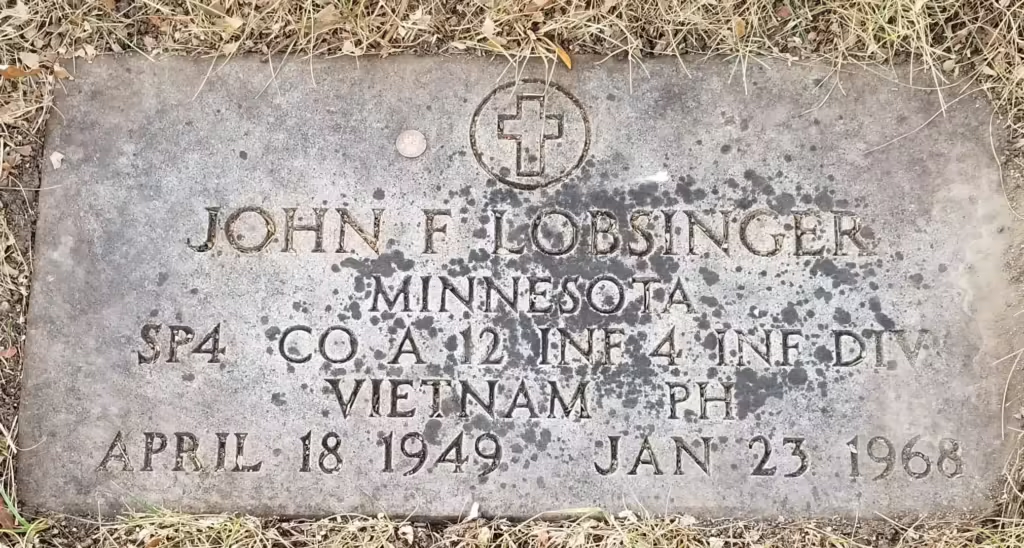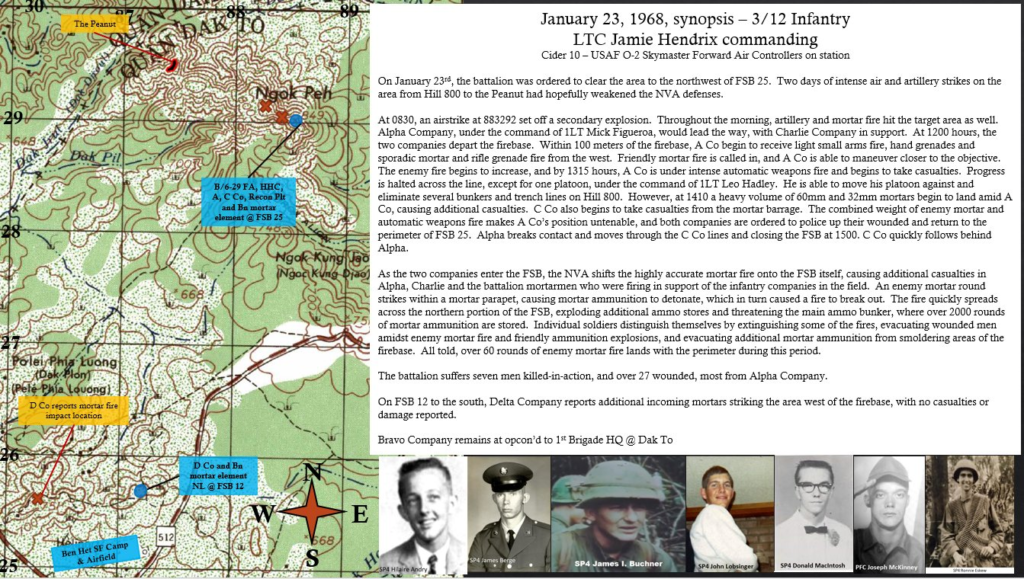Minneapolis, Minnesota, October 17, 2022
In the fall of 2022, my employer gave me the opportunity to travel to Minneapolis-St. Paul for a planning session. After looking at the proposed schedule, I realized I could easily fit in a visit to a few gravesite visits located in and around the area. I compiled a list of veterans of the 3-12 Infantry who died in Vietnam and who’s final resting places were within a short driving distance, and began researching the men’s stories. Gravesite visits #39 thru #44 all occurred during this short one week work trip.
Lakewood Cemetery, St. Louis Park, Minnesota

Lakewood Cemetery sits in St. Louis Park, just southwest of downtown Minneapolis. The cemetery’s northwestern border sits against the shores of Bde Maka Ska, the largest lake within the Minneapolis city limits. Lake Harriot, just slightly smaller, makes up the southwestern border of the cemetery. Surrounded on all other sides by old, well-kept neighborhoods, the green scape of the Cemetery grounds stands out against the gridded network of suburban streets. Upon arriving at Lakewood Cemetery, I immediately noticed a large construction site on the west side of the grounds. Piles of dirt and heavy machinery staged and ready for the newest expansion. According to the Lakewood Cemetery website, John Lobsinger was buried in Section 24, Lot 5C, Grave 4. I downloaded a cemetery map, got my bearings and slowly drove through the sections until I found Section 24. On my way there, I passed a large flock of turkeys in one section, and a large flock of geese in another. Like me, the local birds were enjoying the quiet stillness found amongst the tombstones.
In my rush to prepare for this trip, I had not adequately researched the lot layout of Section 24, and without thinking, I moved to where I assumed John’s headstone would be and began to search. Many of the flat grave markers were completely covered in newly fallen leaves. Small, recessed rectangles of orange, brown and yellow were indicators of a headstone beneath. I moved from one to the next, brushing the leaves off in search of John’s marker. According to the cemetery map, Lot 5C was in the second row up from the street. Again, in my rush, I mistakenly thought that Lot 5C was located in the middle of Section 24 and spent nearly 15 minutes brushing leaves off of markers before I realized I was looking in the wrong area. I moved to where I thought John would be, used another marker as a reference point by searching for it on the cemetery website, and narrowed my search.
I found John’s mother’s headstone first.

Her flat marker was actually raised above ground level a bit, and clear of leaves. I had probably walked past it twice before I finally focused in and read the inscription. Just to the left of her headstone was a small, recessed rectangle covered in fall foliage. I gently brushed the leaves off, and there it was.

A patch of dark greenish black lichen grew in the center of his marker. If I had more time, I would clean it off, but that task would have to wait for another visit. The extended search for John’s marker had warmed me up at least. The temperature that bright October morning was a brisk 30 degrees, and a fairly strong wind pushed through my Grundens jacket and jeans. It was worth it though. The cold awakened me. The sun, low in the sky but still providing a small amount of warmth, felt amazing on my face and shoulders. I placed a penny on John’s headstone, and only then realized I had forgotten my small American flags at home. The cemetery guidelines prohibited adorning the graves with flags anyway, but I would have liked to place one for a picture and then remove it. I snapped a few more pictures of the surrounding area, stood back and took in the entire scene, and thought about John’s service to his nation.
John Forman Lobsinger – Vietnam
John Lobsinger was just 18 years old when he died. He had arrived in Vietnam in late August of 1967 and was assigned to Alpha Company soon after his arrival. He had survived the brutal fighting near Hill 1338 in the Battle of Dak To in November of 1967, and had become a solid and dependable member of his platoon.
In January of 1968, Alpha Company was moved to a new battalion firebase, named FSB 25, located on Hill 849 northeast of the Special Forces Camp at Ben Het near the Tri-Border area of Vietnam. The 3-12 Infantry was given the mission of clearing the hills and ridges between FSB 29 and a small hilltop several kilometers to the west called The Peanut.
Starting on January 19th, Bravo Company and Charlie Company had already attempted to secure the Peanut, but stiff NVA resistance had forced them back to the FSB, and caused dozens of casualties. After days of intense air and artillery strikes on suspected NVA positions in the immediate vicinity of FSB 25, A & C Companies were again ordered to attack toward grid 883292, an enemy strongpoint also referred to as Hill 800. If the Peanut were to be taken, Hill 800 would need to be cleared off first.
Alpha Company took the lead, and departed the perimeter around 1200 hours. Both companies began to report light resistance at around 1230 hours and by 1250, the Alpha Company acting commander, 1st Lieutenant (1LT) Mick Figueroa, reported heavy automatic fire and light casualties. By 1315, the fire had intensified, inflicting additional casualties and halting all movement, except for a single platoon led by 1LT Leo Hadley. Hadley’s platoon assaulted against the forward NVA bunkers on Hill 800, and succeeded in clearing them, allowing the rest of the A Co to continue its advance. 1LT Leo Hadley would be awarded the Silver Star for this action.
At approximately 1410 hours, both Alpha and Charlie were subjected to a heavy volume of 60mm and 82mm mortar rounds. Additional casualties were suffered and the attack ground to a halt. The order was given to return to the FSB 25 perimeter. A Co gathered its casualties and was able to pass through the Charlie Co lines and back to the firebase, with C Co following immediately after.
The NVA mortars teams continued their heavy bombardment, and shifted their fire to within the perimeter of the firebase as Alpha & Charlie Companies entered it. A direct hit on a battalion mortar position caused casualties among the mortarmen firing in support of the infantry companies in the field, and a fire broke out inside a mortar parapet, causing a detonation of stored mortar rounds. The fire spread, and only through several hours of individual acts of bravery to clear smoldering ammo and extinguish the blaze was the major threat to the main ammunition bunker removed.
During this intense combat, SP4 John Lobsinger, just three months shy of his 19th birthday, fell mortally wounded. Before the day was up, six other men from the battalion would be killed, and over 27 wounded.
